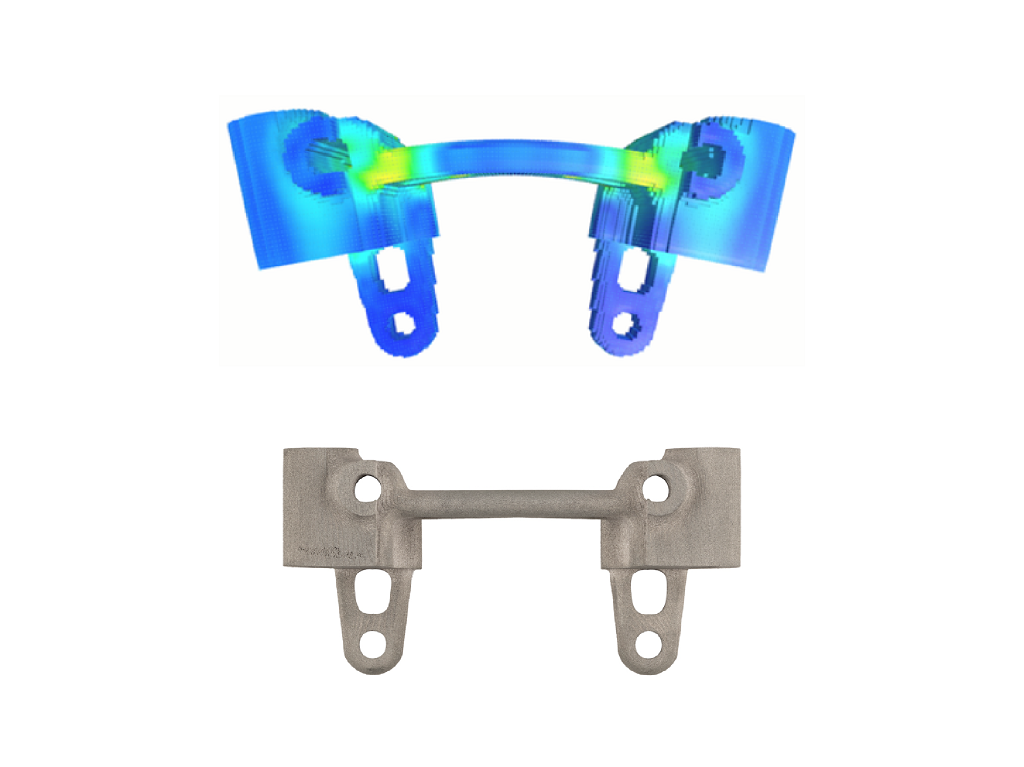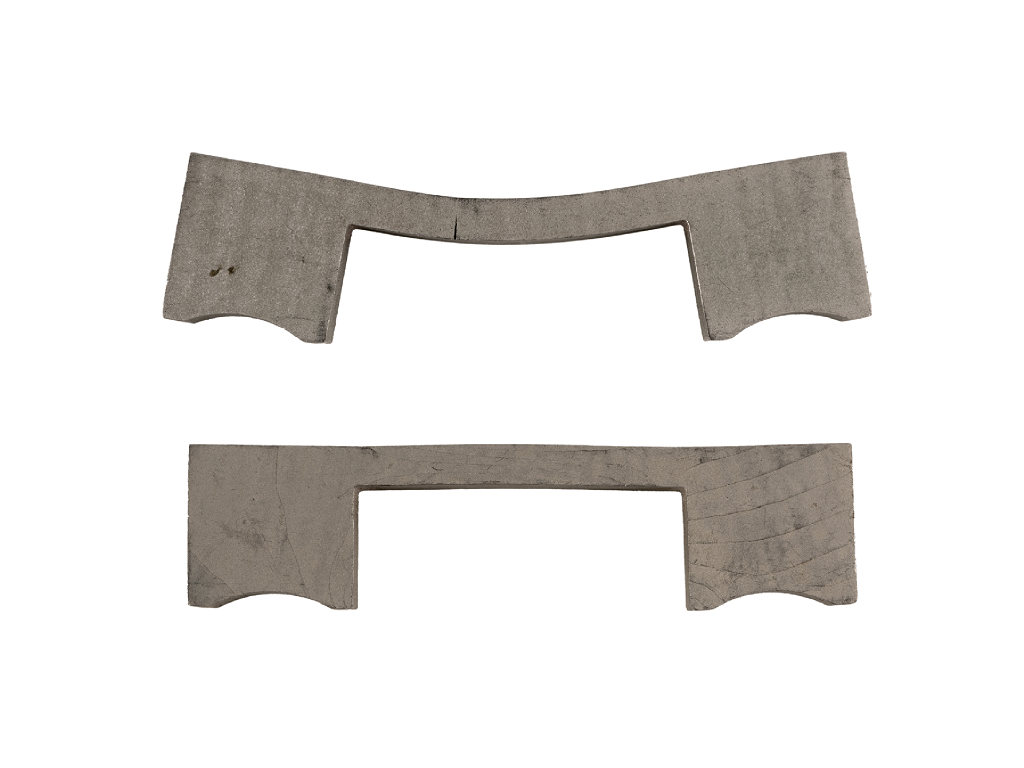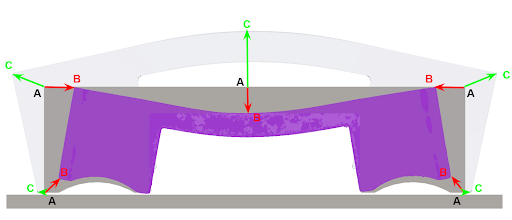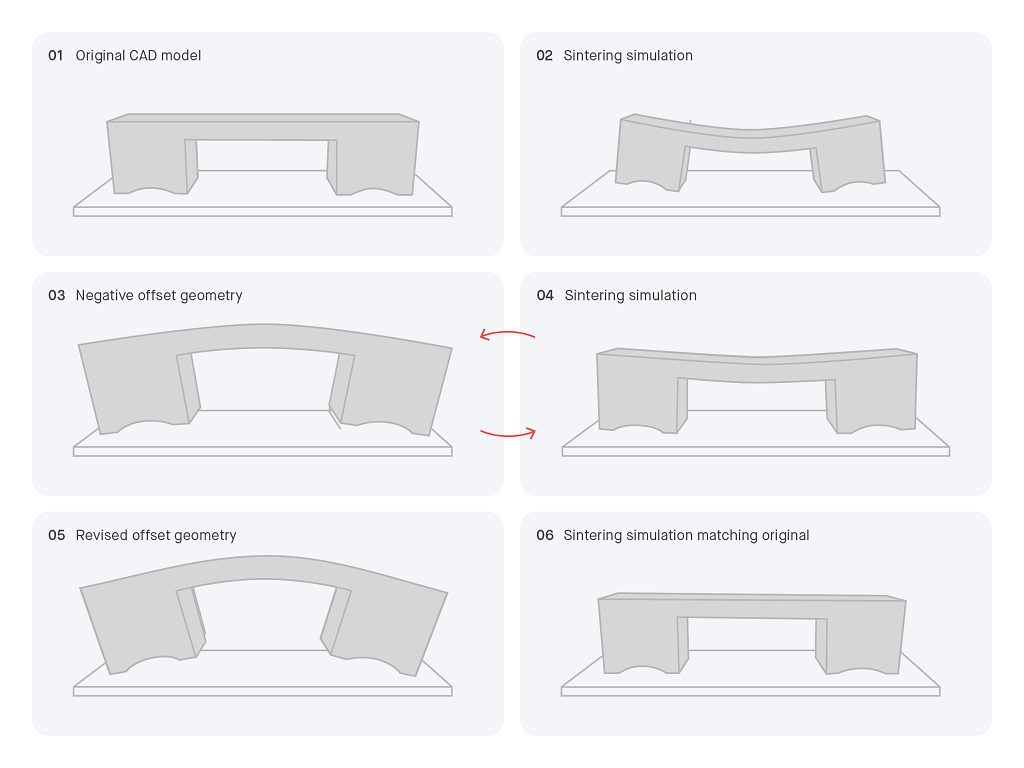
Sintering is a necessary step in metal 3D printing, and a new software application targets accurate compensation for distortions.
In general, “shrinkage” isn’t a fan-favorite word. When it comes to powder metallurgy-based manufacturing processes, though, shrinkage seems an inevitability. In a way, it is; sintering blasts metal parts with high heat that tightly binds the powder together for fully sintered parts, necessarily reducing the part size. The resulting shrinkage can have a substantial impact on that final part, as it can be up to 20% smaller than the part that came off the 3D printer. If that reduction wasn’t taken into account, the part can be distorted and ultimately not offer the geometry — or performance — intended.
Enter simulation.
Solving problems virtually before they happen physically is becoming ever more popular as digital manufacturing technologies like 3D printing gain broader acceptance. It’s much better to design and redesign at the computer before making and remaking expensive and time-consuming builds.

A few years ago, Desktop Metal swaggered onto the simulation scene with the introduction of Live Parts software. Live Parts is a real-time generative design offering that “grows” a design organically. It quickly runs through simulations to create a viable design ready to 3D print.
From the same bright mind behind Live Parts, now we’re introduced to Live Sinter. Andy Roberts, Desktop Metal VP of Software, has continued with his team to develop advanced software for metal additive manufacturing. He explains of the new product:
“Live Sinter was developed by joining forces with — instead of fighting against — sintering-based challenges. In doing so, the software generates negative offset part geometries that sinter to the intended shapes and dimensional specifications. It also tackles some of sintering’s biggest challenges, such as the use of setters. For years, creating setters that prop up parts in the furnace relied on the intuition of few engineers with years of hands-on experience. Now, the process is easier, more predictable, and more controllable using Live Sinter.”
Desktop Metal explains of the software’s capabilities:
“Live Sinter not only corrects for the shrinkage and distortion parts typically experience during sintering, but also opens the door to printing geometries that, without the software, would present significant challenges to sinter. By improving the shape and dimensional tolerances of sintered parts, first-time part success for complex geometries is improved and the cost and time associated with post-processing are minimized. In many cases, the software even enables parts to be sintered without the use of supports.”
Essentially, Live Sinter predicts the distortion a part would experience during sintering and creates what they’re calling “negative offset” geometries that compensate for those distortions. In the end, the part will sinter to the design specs intended.

Obviously there’s a lot of physics at play here, as a lot of factors come into play. Not least among these is how a given alloy responds to a sintering environment; think gravity, density, elastic bending, friction drag, thermodynamic transformation… phew.
Desktop Metal explains of the software:
“Live Sinter runs on a GPU-accelerated multi-physics engine, capable of modeling collisions and interactions between hundreds of thousands of connected particle masses and rigid bodies. The multi-physics engine’s dynamic simulation is refined using an integrated meshless finite element analysis (FEA), which computes stress, strain, and displacement across part geometries used to predict not only shrinkage and deformation, but also risks and failures, validating the feasibility of a part for sintering-based additive manufacturing before the build begins.”

These are applicable as well not only to binder jetting, but any sintering-based metallurgy process. Desktop Metal has been working with MIM processes as well, understanding that complete metal manufacturing solutions aren’t only AM-based, and Live Sinter will be compatible beyond 3D printing. As a Desktop Metal product, though, naturally first release is to the company’s customers, as Live Sinter will be available for Shop System and Production System users beginning Q4 2020. (They note: “In time, the Company may offer the process simulation software to users of any sintering-based powder metallurgy process.”)
It should also be noted that Live Sinter was designed to be a speedy software solution. According to Desktop Metal, a typical sintering furnace cycle can be simulated as quickly as five minutes, while just 15 minutes later those negative offset geometries can be generated.
While we’re often drawn to the high-profile additive manufacturing equipment Desktop Metal offers, announcements like this remind us that the company is a strong player as well in software.
Via Desktop Metal
